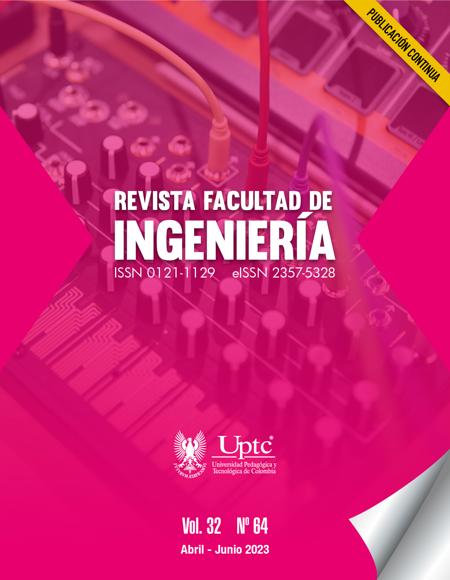BiolCol: Technological Platform for the Dissemination of the Biological Reference Collection of Aquatic Macroinvertebrates

Abstract
UNISANGIL has one of Colombia's five collections of aquatic macroinvertebrates, being the only one in the Department of Santander. The bioinformatics platform "Biological Collection - BiolCol" seeks to digitize the biological reference collection of macroinvertebrates of UNISANGIL-CBMUS. The design of BioCol was led by three students and the coordinator of the GIBD-SI of the UNISANGIL Systems Engineering Program. The work methodology applied in the development process was Scrum. Additionally, we followed the method Sampieri proposed to identify the needs, establish the objectives, define the scope, formulate the projected activities over time, and define the deliverables for developing the application. Based on the Darwin Core standard used by the Colombian biodiversity information system (SiB Colombia), we designed the system architecture, built models, and designed the database. To develop the interface, we used Laravel for the back end and NodeJS for the front end, and we integrated the images and 3D models of those specimens with available information. The platform allows the online registration, storage, and visualization of information CBMUS collection specimens. It also generates a label with a QR code for each individual, which enables queries of the data stored for each specimen. Overall, this platform aims to facilitate the registration, administration, and dissemination of biological collection information for researchers and the community in general.
Keywords
aquatic macroinvertebrates, bioinformatics platform, computational fluid dynamics, subsidence, software
References
- G. Didier, C. M. Villa, “Informe de gestión institucional año 2021,” Instituto de Investigación de Recursos Biológicos Alexander von Humboldt. Bogotá D. C., 2022.
- E. Arbeláez Cortés, “Describiendo especies: un panorama de la biodiversidad colombiana en el ámbito mundial,” Acta Biológica Colombiana, vol. 18, no. 1, pp. 165-178, 2013.
- J. L. Villaseñor, “¿La crisis de la biodiversidad es la crisis de la taxonomía?,” Botanical Sciences, vol. 93, no. 1, pp. 03-14, 2015. DOI: https://doi.org/10.17129/botsci.456
- J. V. Crisci, “Espejos de nuestra época: biodiversidad, sistemática y educación. Gayana,” Botánica, vol. 63, no. 1, pp. 106-114, 2006. DOI: https://doi.org/10.4067/S0717-66432006000100006
- M. Coronado Zamora, ¿Qué es la bioinformática?, 2013. Bioinformática al alcance. http://bioinformatica.uab.cat/genetica_tfg/bioinformaticaabast/Qu%C3%A9_es.html
- A. Soto, Digitalización y Registro 2D y 3D, 2014. https://prezi.com/udyedqsg_1h7/digitalizacion-y-registro-2d-y-3d/
- D. Murcia, A. Guillen, S. Martínez, Propuesta para la implementación del proceso de digitalización documental certificada para la empresa RTVC sistemas de medios públicos en el proceso de proveedores, 2018. https://repository.ucatolica.edu.co/bitstream/10983/16000/trabajo%20de%20%sintesis%20aplicada%20fase%20final.pdf
- K. M. Moreira Banes, Implementación del módulo de digitalización de documentos para la carrera de Ingeniería en Sistemas Computacionales, Universidad de Guayaquil, Ecuador, 2011. http://repositorio.ug.edu.ec/bitstream/redug/6742/1/Tesis%20Completa%20-344-2011.pdf
- Instituto von Humboldt, Las colecciones biológicas, ¡fundamentales para la conservación de la biodiversidad!, 2019. http://www.humboldt.org.co/es/noticias/actualidad/item/999-colecciones-conservacion-biodiversidad#:~:text=Las%20colecciones%20biol%C3%B3gicas%20son%20repositorios,la%20memoria%20de%20los%20ecosistemas
- Instituto von Humboldt, Registro Nacional de Colecciones Biológicas (RNC), 2020. http://www.humboldt.org.co/es/servicios/servicios-y-recursos/registro-unico-nacional-de-colecciones-biologicas-rnc
- Global Biodiversity Information Facility, ¿Qué es Darwin Core y por qué es importante?, 2023. https://gbif.org/es/darwin-core
- R. Ladrera, “Los macroinvertebrados acuáticos como indicadores del estado ecológico de los ríos,” Páginas de Información Ambiental, vol. 39, pp. 24-29, 2012.
- I. Sommerville, Ingeniería de Software, 9ª Edición. Pearson Educación, México, 2011, pp. 56-73.
- Zendesk. ¿Qué es la metodología ágil y cuáles son las más utilizadas?, 2022. https://www.zendesk.com.mx/blog/metodologia-agil-que-es/
- M. Tena, ¿Qué es la metodología ágil?, 2018. https://www.bbva.com/es/metodologia-agile-la-revolucion-las-formas-trabajo/
- J. Palacio, C. Ruata, Scrum Manager. Gestión de Proyectos. Revisión 1.4.0. Safe Creative, 2011. https://topodata.com/wp-content/uploads/2019/10/210617918-Gestion-de-Proyectos-Juan-Palacios.pdf
- R. Hernández Sampieri, C. Fernández Collado, P. Baptista Lucio, Metodología de la investigación, 6a. Edición, McGraw-Hill, México D.F., 2014.
- J. Barrera Suárez, D. Morales González, O. Quecho Zambrano, Diseño e integración del módulo “Análisis de Datos” para los resultados obtenidos en las pruebas Saber 11 y Pro en UNISANGIL empleando inteligencia de negocios, Grade Thesis, Fundación Universitaria de San Gil, Colombia, 2011.
- Equipo IDA, Metodología Scrum en proyectos digitales, 2017. https://blog.ida.cl/estrategia-digital/metodologia-scrum-en-proyectos-digitales/
- SiB Colombia, SiB Colombia,2022. https://biodiversidad.co/
- Balsamiq Wireframes, Wireframe tool, 2008. https://balsamiq.com/wireframes/